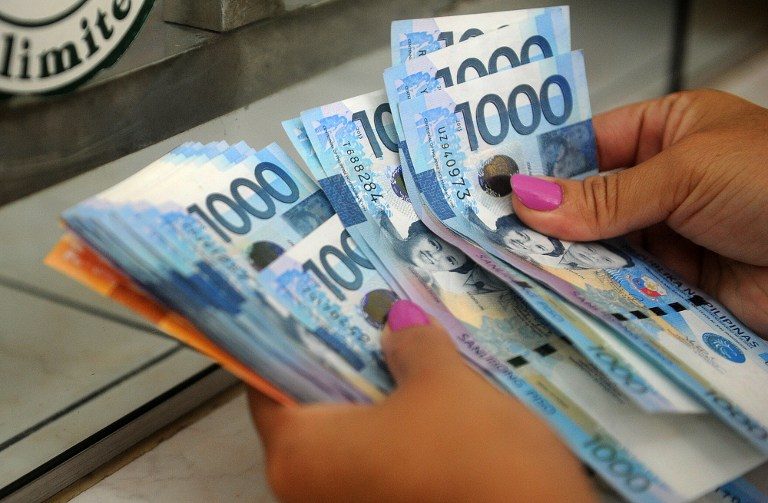SUMMARY
This is AI generated summarization, which may have errors. For context, always refer to the full article.

MANILA, Philippines (3rd UPDATE) – The Philippine peso closed at a fresh 8-year low and at one point, traded above P50 to the US dollar, amid a broad sell-off in emerging markets due to the strengthened greenback.
The peso touched P50:$1 midway into the trading day on Thursday, for the first time in a decade. The last time the local currency was weaker than P50 to the dollar was in November 2006.
The peso then closed at P49.98:$1 on Thursday, its lowest level since November 24, 2008 – the height of the global financial crisis meltdown.
But for economists and government officials, the weakening of the peso is not alarming, as other currencies are also depreciating across emerging markets like Indonesia and Malaysia.
Broad sell-off in EM
“The pace by which the peso has been weakening against the USD remains very manageable – not alarming,” Bank of the Philippine Islands (BPI) lead economist Emilio Neri Jr told Rappler.
His remarks were echoed by Bangko Sentral ng Pilipinas (BSP) Governor Amando Tetangco Jr.
“The peso weakness in today’s trading is in line with the movements in regional currencies, which in turn reflected the US dollar’s strength,” Tetangco told reporters in a text message.
According to Neri, the local currency “has only dropped 2.8% since the US presidential election.”
“We are actually seeing steeper declines for the Japanese Yen (JPY,), Malaysian Ringgit (MYR), Korean Won (KRW), Indonesian Rupiah (IDR), and the Indian Rupee (INR) since Donald Trump was elected,” he added in an email correspondence.
The US Federal Reserve’s Federal Open Market Commitee (FOMC) also released the minutes of its November meeting on Wednesday, November 23.
Many participants expressed the view that it could be appropriate to raise rates relatively soon as long as incoming data and labor market conditions continue to be in line with their objective, said Metrobank in its market analysis for Thursday.
“Strong data and minutes of the previous FOMC meeting bolstered the US dollar against most other currencies overnight. It’s Thanksgiving weekend in the US already, so Europe (UK GDP) or Japan (CPI inflation) may set direction from the international front,” Neri said.
‘Expected’
For Finance Secretary Carlos Dominguez III, the depreciation was expected of the peso, as well as other Asian currencies, in light of the anticipated early rate increase by the US Federal Reserve next month.
“We are watching the currency movements very closely. We seem to be moving in the same direction as the other currencies. We just want to avoid abrupt changes in the exchange rates,” Dominguez said.
He said the country’s strong macroeconomic fundamentals would shield the domestic economy from external shocks such as higher US interest rates and a stronger dollar.
Finance Undersecretary Gil Beltran also said the strengthening of the greenback against the peso “is expected as an impact of the Fed normalization.”
“The peso is just normalizing. It was P57 per the US dollar in 2004. All other currencies are moving in the same direction,” he said.
Tetangco said monetary authorities are not worried about the continued weakening of the peso against the dollar.
“Our view here is that for as long as movements in the exchange rates are not ‘out of line’ against fundamentals and if these are not exaggerated to dislodge expectations, the BSP can allow for the exchange rate to move [either up or down],” he said.
Above P50:$1 next year
From now until the US monetary policy meeting in December, Guian Angelo Dumalagan, market economist at the Land Bank of the Philippines, had told Rappler that “the dollar might remain above the P49 level due to rate hike expectations as well as political uncertainties in the US.”
“After the December meeting, the dollar could test the P50 dollar mark, especially if the US central bank pushes through with its rate adjustment and signals a faster pace of future monetary tightening,” he added.
If US President-elect Donald Trump ramps up his country’s infrastructure spending, Dumalagan said the dollar could breach the P50 mark, “as aggressive government spending could boost US inflation leading to potentially more US rate hikes next year.”
BSP chief Tetangco earlier said that the BSP could intervene if there is excessive volatility in the foreign exchange market. – Rappler.com
Add a comment
How does this make you feel?
There are no comments yet. Add your comment to start the conversation.